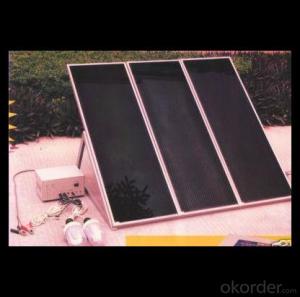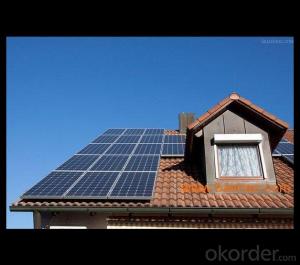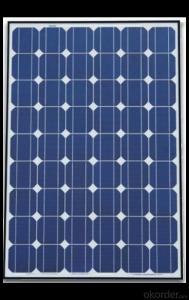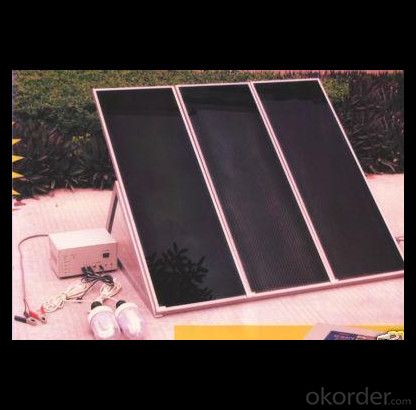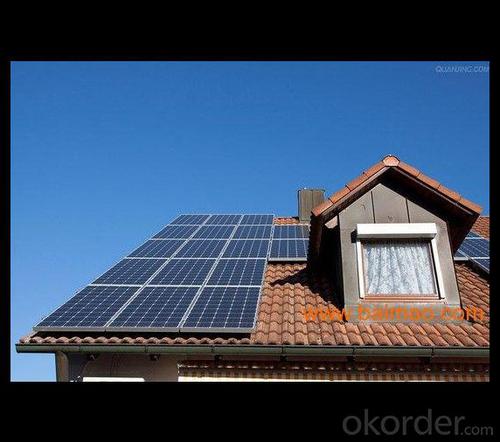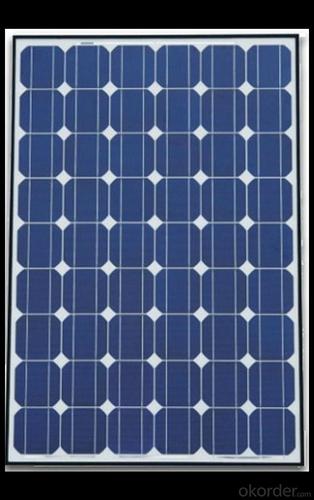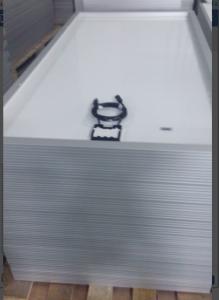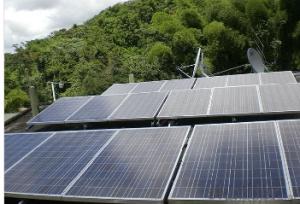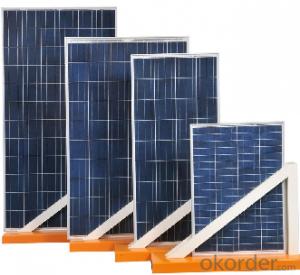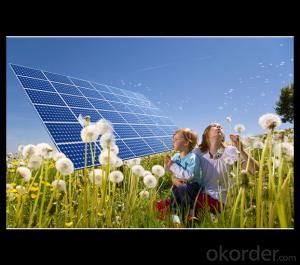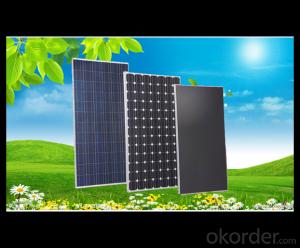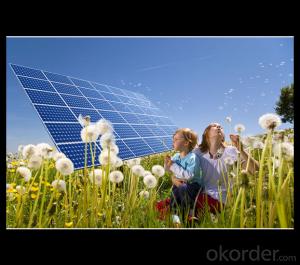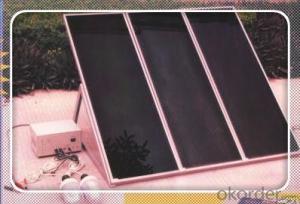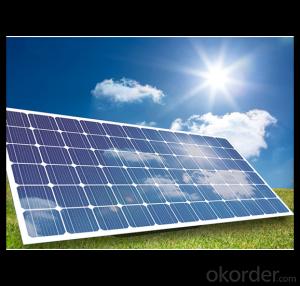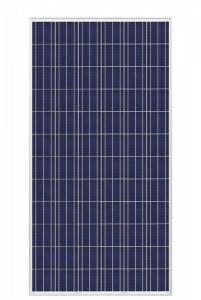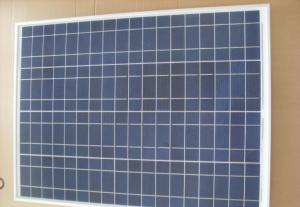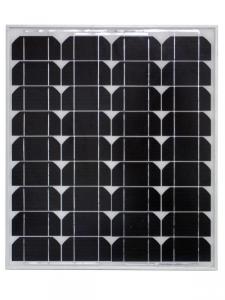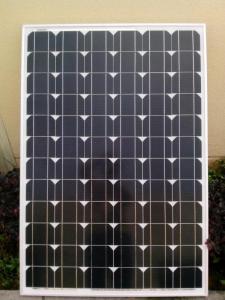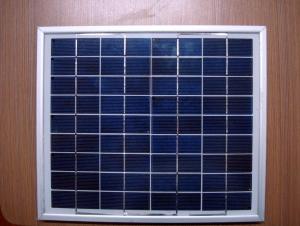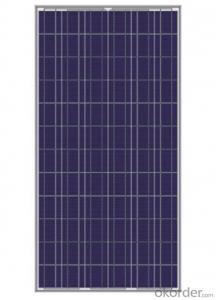Solar Panels Jacksonville - 255w Direct Factory Sale Price 240-260watt Solar Panels
- Loading Port:
- China main port
- Payment Terms:
- TT OR LC
- Min Order Qty:
- 10000 watt
- Supply Capability:
- 100000 watt/month
OKorder Service Pledge
OKorder Financial Service
You Might Also Like
Specification
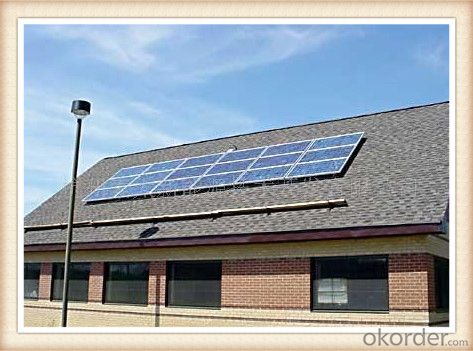
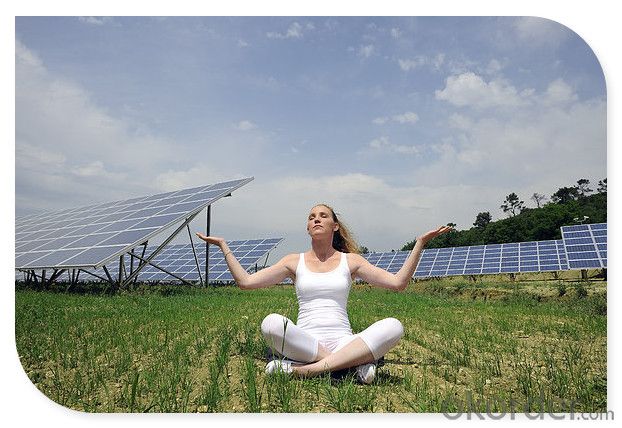
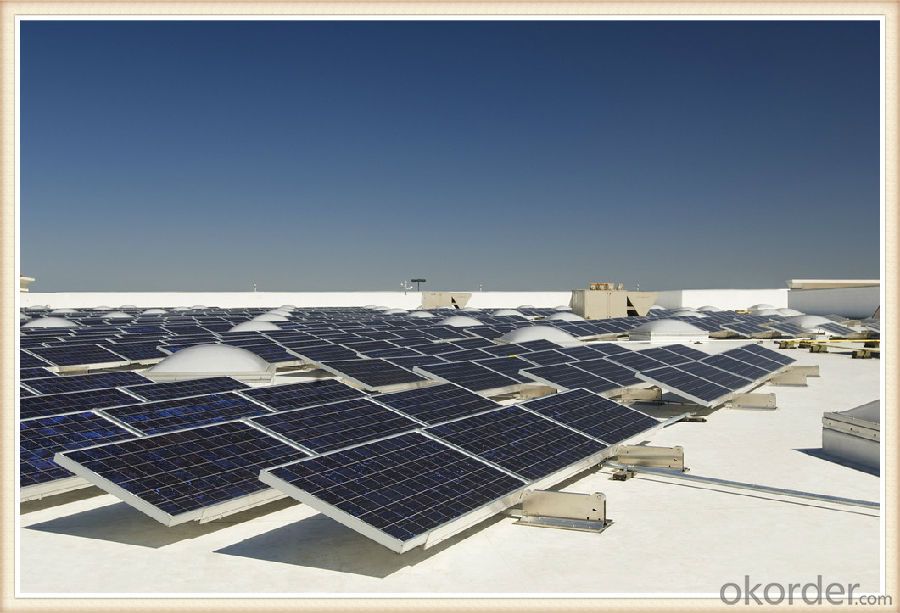
Solar Module Introduction
Solar modules use light energy (photons) from the sun to generate electricity through the photovoltaic effect. The majority of modules use wafer-based crystalline silicon cells or thin-film cells based on cadmium telluride or silicon. The structural (load carrying) member of a module can either be the top layer or the back layer. Cells must also be protected from mechanical damage and moisture. Most solar modules are rigid, but semi-flexible ones are available, based on thin-film cells. These early solar modules were first used in space in 1958.
Electrical connections are made in series to achieve a desired output voltage and/or in parallel to provide a desired current capability. The conducting wires that take the current off the modules may contain silver, copper or other non-magnetic conductive transition metals. The cells must be connected electrically to one another and to the rest of the system. Externally, popular terrestrial usage photovoltaic modules use MC3 (older) or MC4 connectors to facilitate easy weatherproof connections to the rest of the system.
Specification
Model Type | |
Peak Power-Pmax(W) | 5-200W |
Open Circuit Voltage-Voc(V) | 44.2 |
Maximum Power Voltage-Vmp(V) | 36 |
Short Circuit Current-Isc(A) | 5.4 |
Maximum Power Current-Imp(A) | 5 |
Maximum System Voltage | 1000V DC |
Maximum Series Fuse Rating | 10A |
Power Tolerance | -1~+3% |
Temperature Coefficients of Pmax | -0.45%/℃ |
Temperature Coefficients of Voc | -0.348%/℃ |
Temperature Coefficients of Isc | 0.031%/℃ |
Nominal Operating Cell Temperature | 44.5±2℃ |
Standard Testing Condition(STC) | Irradiance:1000W/m²;Temperature:25℃;AM=1.5 |
Qualification Test Parameters | |
Operating Temperature | -40℃~+85℃ |
Storage Temperature | -40℃~+85℃ |
Pressure Bearing | ≥5400Pascal/m² |
Wind Bearing | ≥5400Pascal/m² |
Mechanical Characteristics | |
Cell Size | Mono 125*125mm±0.5 |
No.of Cells | 72pcs(6*12) |
Dimension | 1580*808*40mm |
Weight | 15.5Kg |
Glass | 3.2mm High Transmission,Low Iron |
Frame | Anodized Aluminum Alloy |
Junction Box | IP65Rated |
Internal Diodes | 3 Bypass Diodes |
Cable | 1*4.0mm² Length 900mm |
Images
Packing & Shipping:
We have rich experience on how to pack the panels to make sure the safety on shipment when it arrives at the destination.
The normal size is packed by 25pcs/ carton / pallet. Paper carton for FCL shipping and wood carton for LCL shipping.
Features
1.High reliability with guaranteed -3% to +5% power output tolerance, ensuring return on investment
2.High conversion efficiency based on leading innovative photovoltaic technologies
3.Withstands high wind-pressure and snow load, and extreme temperature variations
4.Attractive appearanceUnique frame design, high mechanical strength, and easy Installation
Warranty:
For c-Si panel: 25years output warranty for no less than 80% of performance, 10 years output warranty for no less than 90% of performance. Free from material and workmanship defects within 5 years.
For a-Si panel: 20 years output warranty for no less than 80% of performance, 10 years output warranty for no less than 90% of performance. Free from material and workmanship defects within 2 years.
•100% product quality protection
•100% on-time shipment protection
•100% payment protection for your covered amount
FAQ:
(1)What price for each watt?
It depends on the quantity, delivery date and payment terms.
(2)What is your size for each module? Can you tell me the Parameter of your module?
We have different series of panels in different output, both c-Si and a-Si. Please take the specification sheet for your reference.
(3)Can you provide the peripheral products of the solar panels, such as the battery, controller, and inverter? If so, can you tell me how do they match each other?
Actually we are only manufacturer of solar panels, but we could try to source them for you in China if you need. We could provide you an optimal system design to instruct you how to install.
(4)Do you have the CE, TUV, UL Certification?
We’ve already passed all the tests, and any certificate is available.
(5)Have you ever sold your products to companies in my country?
Of course, we have customers in all general PV markets, but I think we should expand our market share along with the market growth.
(6)When did your company set up? You are a new company, how can I believe your quality?
We entered into Solar PV industry in 2005, now we have several plants in manufacturing of a-Si and c-Si panels, and our capacity is 220MW per year. Till now we have already passed all the tests by authorized laboratories, e.g. TUV, VDE, UL.
(7)Can you help us install the module if we cooperate with you?
We haven’t entered into installation sector, but we have the plan in near future.
(8) How do you pack your products?
We have rich experience on how to pack the panels to make sure the safety on shipment when it arrives at the destination.
(9) Can you do OEM for us?
Yes, we can.
(10)Can we visit your factory?
Surely, I will arrange the trip basing on your business schedule.
- Q: Is it possible to store energy from solar panels for night?
- Yes. okorder /) and informed me of all the incentives I was eligible to receive as well as giving me a break-even analysis, estimated annual savings, and projected return on investment. They are a great resource to begin your solar pursuit. Good Luck!
- Q: Can solar panels be installed on billboards?
- Yes, solar panels can be installed on billboards. In fact, many companies are utilizing this option to generate renewable energy and reduce their carbon footprint. By harnessing solar power, billboards can become self-sustaining and contribute to a greener environment.
- Q: I been considering to get a solar panel system but I don't know if I'm going cut my electric bill every month , It's a lot of money to spend and I'm not really sure
- I'm waiting for the gov't to do right thing and subsidize my purchase!
- Q: Can solar panels be installed on asphalt shingles?
- Yes, solar panels can be installed on asphalt shingles. However, it is important to ensure that the shingles are in good condition and can support the weight of the panels. Proper installation techniques and mounting systems designed for asphalt shingles should be used to prevent any damage to the roof.
- Q: We are looking in to buy solar panels for our house. The payment has to be around or under $4000. Our house is a 4 bedroom and 3 bath 2-story house. (Around 2500 sq. ft.) Where can we get the solar panels? Also: Will it heat our water? When we get the solar panels, what direction do they have to be facing?
- The crisis is that it's so high priced to have mounted and as you assert it's going to take decades earlier than you honestly begin saving above what the install rate used to be, I for my part might now not cross forward and make that kind of funding, it might be extra lucrative to hold the cash in a constructing society, get the curiosity from it and use that to pay to your electrical energy however the important factor that I have towards sun Panels is that until you keep in that condo for a minimum of twenty 5 years you'll now not succeed in the factor in which you're saving and to capitalise on it you might need to keep there for decades extra, so you'll now not have the choice of relocating condo with out wasting your funding and on the second having sun panels does now not develop the significance of the estate, it's only a well promoting factor, while you purchase your new condo, you might commonly need to begin everywhere once more after which given that of the years will on no account reside lengthy ample to obtain any improvement from it.
- Q: Do solar panels work at night?
- No, solar panels do not work at night because they require sunlight to generate electricity.
- Q: My solar panel is 24long..It is set at 45deg..the arms are 8quot;long to achieve that angle for winter. I need to get to 7deg for summer..how long will the new arms need to be?..in layman's terms please...thx
- 2.20 approximatey (2 /4 -- ish) X = (tan7)(8/tan45)
- Q: Can solar panels be installed on greenhouses?
- Yes, solar panels can be installed on greenhouses. In fact, it is a popular practice as it allows for the dual use of land and maximizes energy efficiency. The solar panels can provide electricity for both the greenhouse operations and potentially for other nearby buildings or the grid.
- Q: How much per sq inch do they cost? Will i have to worry about them blowing off during hurricane season? If the sun isnt out for a week will my power go out? Will I have to check them every week and check which ones arent working and replace them? Is there anyway for them to be damaged by acid rain or any type of erosion like hail? When do I have to replace them? How do I dispose of old ones (like recycling)? What is smarter and more economical having few big panels or many small ones? I know I have alot of questions but I want a good detailed answer.
- The cost of solar is measured in dollars per watt. That means the cost of a cell that can make one watt continuously in full sunlight. A friend of mine is starting a new job to set up a new solar cell factory and he said the present cost is $3 per watt, but that they expect to get that down to $ per watt in a few years. They can be damaged by weather, just like any regular roof. My insurance agent asked if I had solar panels, so it is a factor in insurance cost. I never heard of recycling or disposing of old panels, maybe because they are so new and last so long that not many are ready to be disposed of yet.
- Q: my dad wants to run all his lights in his shop on solar panels, he has 9 600 watt hps lights. how many solar panels would it take to pull this off
- If he lives in a sunny area, he should contact a local solar installer about getting a grid-tied solar system to offset his electric bill. It's not necessary to supply all the electricity from solar. The system will work seamlessly right alongside grid electricity, and your father can choose whether to supply 20% of the electricity or 99% by sizing the system appropriately.
Send your message to us
Solar Panels Jacksonville - 255w Direct Factory Sale Price 240-260watt Solar Panels
- Loading Port:
- China main port
- Payment Terms:
- TT OR LC
- Min Order Qty:
- 10000 watt
- Supply Capability:
- 100000 watt/month
OKorder Service Pledge
OKorder Financial Service
Similar products
Hot products
Hot Searches
Related keywords
